Proxy Traffic: Definition, Opportunities and Insight Analytics for Affiliates
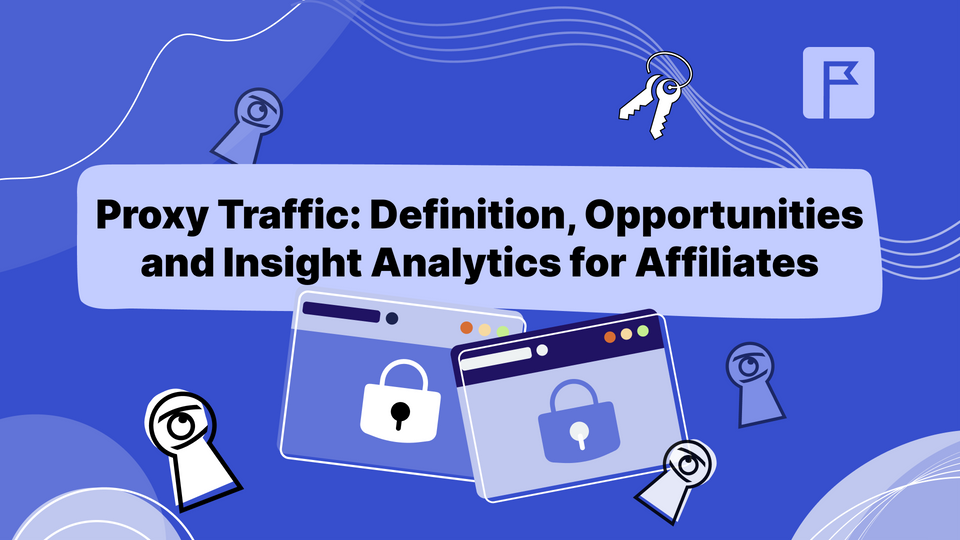
The presence of proxy traffic plays a crucial role for both regular internet users and affiliates. Serving as intermediaries between IP address and final destination website, it allows us to access the necessary resources and at the same time ensure our data is secured.
This article provides a basic overview of proxy traffic, the pros & cons for advertisers, and finally, we will share some insider statistics from HilltopAds: Proxy Traffic Shares by Country, Operating System & Browser, and Browser Language.
So without further ado, let's dive right into it!
How Proxy Works
To put it simply, a proxy server is a computer or software that acts as an intermediary between your device and the internet. It allows you to browse the web while hiding your true IP address, which helps protect your privacy and security.
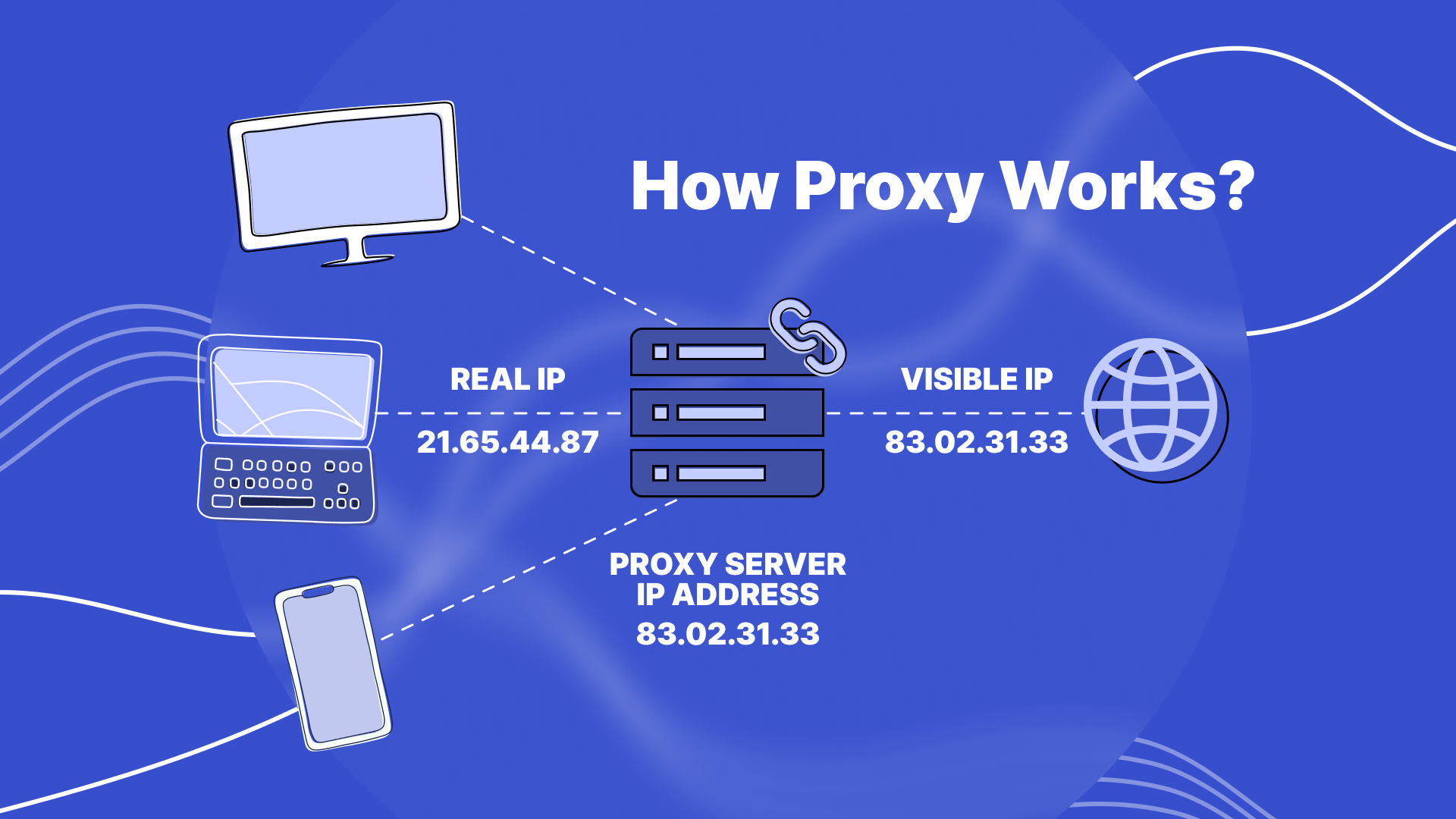
Benefits for Affiliates
Aside from the fact that proxy traffic may be associated with bot traffic and malicious activities on your website (which is not the case if you drive traffic from HilltopAds 😉), experienced users can greatly benefit from this type of traffic. There are a few common ways in which proxy traffic can turns out to be effective:
For Enhancing Ad Campaigns:
- Work with Offers from Different GEOs: Proxies allow marketers to set up, test, optimize, and scale campaigns for various geographic locations.
- Reach More Potential Clients: Utilizing proxy services enables access to a broader audience, leading to more sales and conversions, as confirmed by other studies.
- Overcome Security Checks: Proxies help bypass website security checks, enabling marketers to analyze ad distribution and landing page designs.
- Access High-Value Regions: Affiliates can reach regions with higher PPC costs, such as North America or Europe, where higher costs per click yield greater rewards.
- Targeted Traffic: Proxies enable precise targeting based on location, device type, and browsing habits.
- Cost-Effective: Proxy traffic is often more affordable compared to direct or organic traffic.
For Ensuring User's Security:
- Maintain Security: Regular users can activate proxies to protect their privacy and ensure secure browsing.
- Anonymity: Proxies help maintain user anonymity while online.
For Bypassing Restrictions and Working with Special Software:
- Special Software: Proxies facilitate the use of particular software, such as parsing tools or mass-posting applications.
- Bypass Regional Restrictions: Proxy servers enable users to bypass geo-restrictions in certain regions and countries.
- Geo-Restriction Bypass: Proxies help visitors access content restricted by geographic location.
- Bypass Anti-Fraud Systems: Proxies can circumvent anti-fraud measures, allowing mass registrations on platforms like Facebook or Google Ads.
By leveraging these advantages, affiliates and marketers can optimize their strategies, ultimately leading to improved campaign performance and greater success.
Of course, there is no perfect marketing strategy. And using proxy services has some drawbacks as well.
Cons for regular users:
- Slower speeds: One of the main disadvantages of proxy traffic is that it can be slower than direct traffic.
- Limited access: Some websites and online services may block access from proxy servers, and users' ability to access certain content.
- Security risks: While proxied traffic can offer increased security in some cases, it can also introduce new security risks.
Cons for affiliates and media buyers:
- Quality concerns: One of the main drawbacks of proxy traffic is that it may not always be high-quality.
- Limited control: Traffic buyers may not have control over the sources and types of proxy traffic they receive.
- Risk of fraud: Proxy traffic can also be used to commit fraud or other types of malicious activity and negatively influence on your website or ads operation.
Now that we have a basic understanding of how proxies work and their potential for affiliates, let's dive into the most interesting part of this article: the insights from HilltopAds' analytics!
Proxy Traffic Distribution by GEOs
The geographical distribution of proxy traffic unveils intriguing patterns that can elevate your marketing strategies to a new level. From regions with stringent internet censorship to those with a high demand for privacy, understanding the proxy landscape by country empowers marketers to tailor their campaigns accordingly, maximizing engagement and conversion rates.
We will begin by sharing our results on investigating the GEOs where the distribution of proxy traffic prevails among others.
Countries with High Proxy Traffic Share (% of proxy traffic out of the total traffic for the specific GEO)
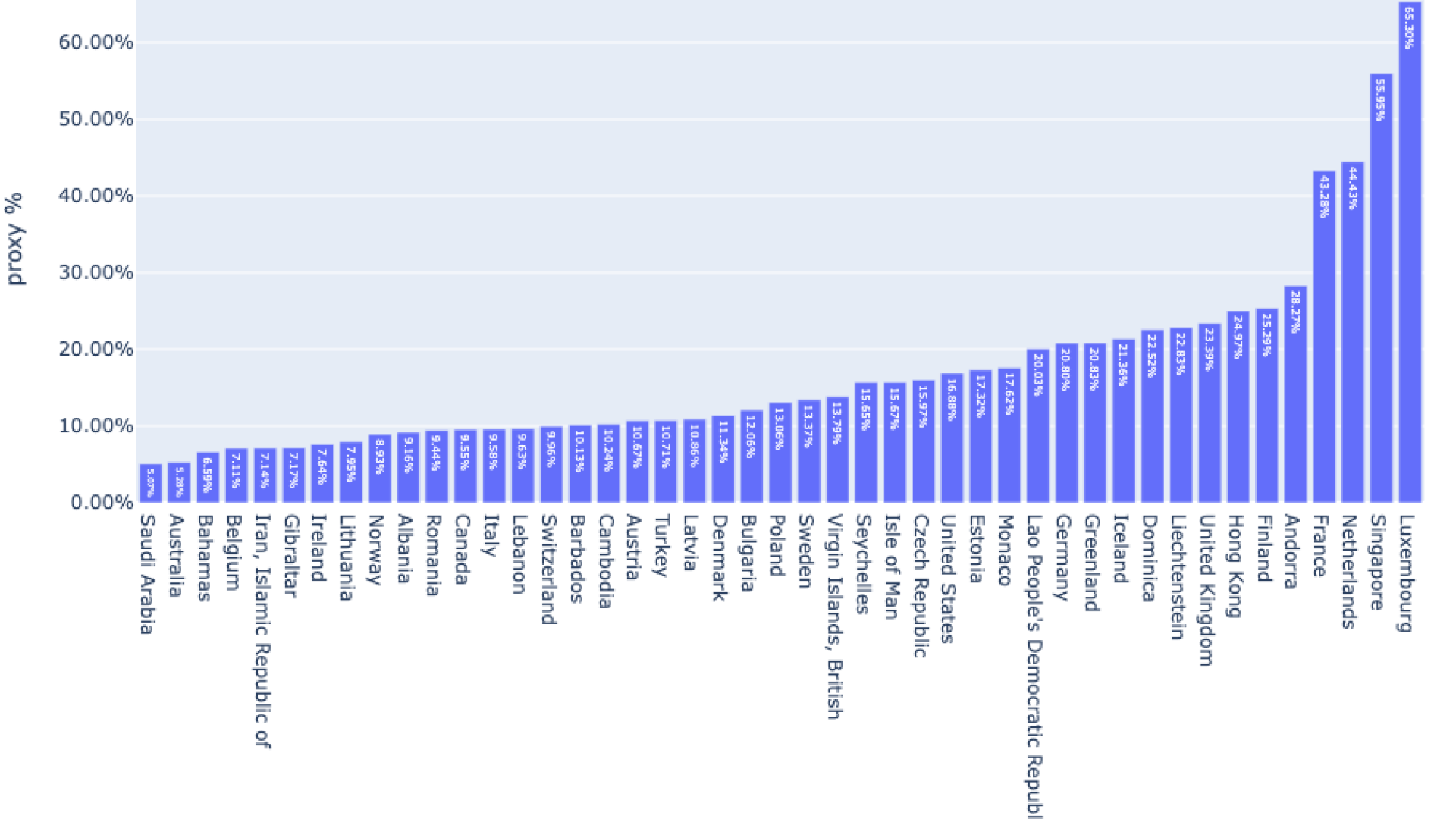
The graph highlights the countries with a proxy traffic share above 5%. The highest values are observed in:
- Luxembourg 🇱🇺 : 65%;
- Singapore 🇸🇬 : 56%;
- Netherlands 🇳🇱 : 44%;
- France 🇫🇷 : 43%;
- Finland 🇫🇮 : 25%;
- Hong Kong 🇭🇰 : 25%;
- United Kingdom 🇬🇧 : 23%;
- Germany 🇩🇪 : 20%;
- Lao People's Democratic Republic 🇱🇦 : 20%;
- Estonia 🇪🇪 : 17%;
- United States 🇺🇸 : 17%;
- Czech Republic 🇨🇿 : 16%.
Distribution of Total Proxy Traffic by Region
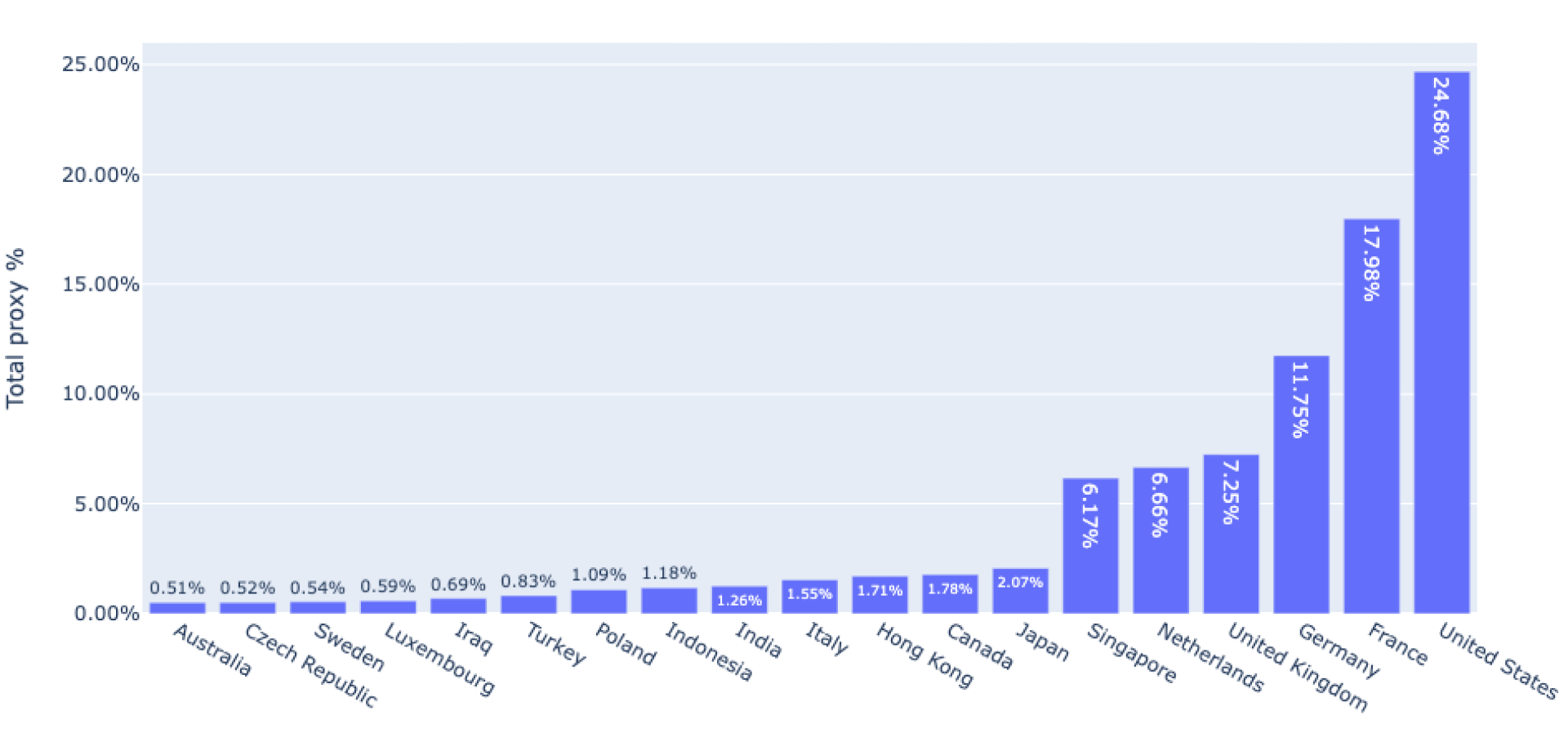
The graph represents the distribution of proxy traffic by country according to our statistics:
- United States 🇺🇸 : 25%;
- France 🇫🇷 : 18%;
- Germany 🇩🇪 : 12%;
- United Kingdom 🇬🇧 : 7%;
- Netherlands 🇳🇱 : 7%;
- Singapore 🇸🇬 : 6%;
- Japan 🇯🇵 : 2%;
- Canada 🇨🇦 : 2%;
- Hong Kong 🇭🇰 : 2%;
- Italy 🇮🇹 : 1.5%;
- India 🇮🇳 : 1%;
- Indonesia 🇮🇩 : 1%;
- Poland 🇵🇱 : 1%.
- Others: <1%.
Proxy Traffic Share by OS & Browsers
Another important aspect you must know is the proxy traffic distribution for different OS&Browsers
What makes this data particularly potent for affiliates is its direct applicability to real-world advertising campaigns. Armed with the knowledge of which OS&Browser attract the most proxy traffic, marketers can tailor their promotional efforts with surgical precision. For example, if the data indicates a significant influx of proxy traffic from Chrome users on Windows OS, affiliates can craft ad creatives specifically optimized for this audience segment. Whether it's developing browser-specific landing pages, crafting personalized messaging, or offering tailored incentives, this data empowers affiliates to maximize their campaign effectiveness and ROI.
OS&Browsers with High Proxy Traffic Share
(% of proxy traffic out of the total traffic for the specific OS&Browser)
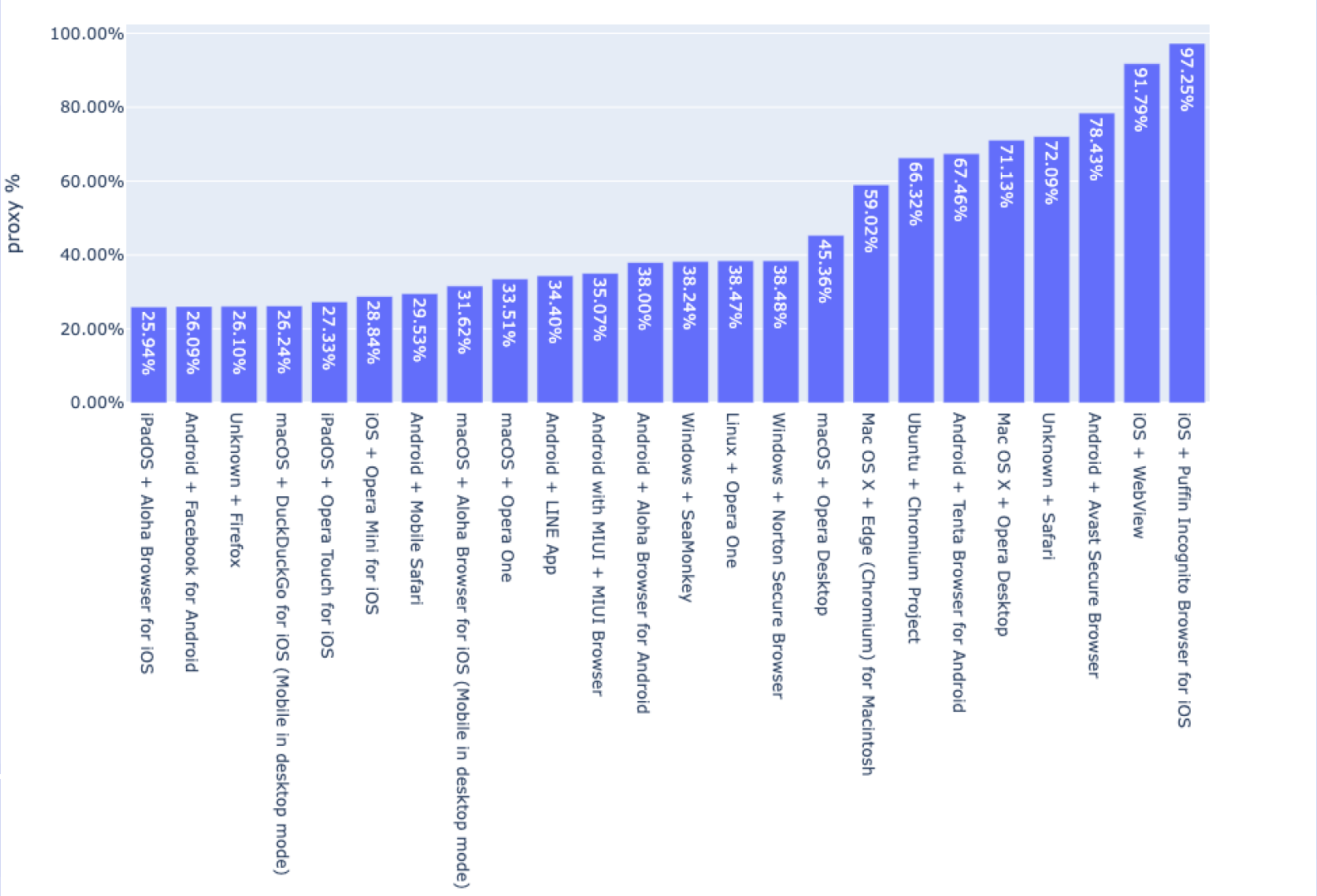
The graph shows the OS and browsers with a proxy traffic share above 25%.
Top by number of impressions:
- Android + Facebook: 26%;
- Android + Aloha Browser: 38%;
- iPadOS + Aloha Browser: 26%;
- iPadOS + Opera Touch: 27%;
- macOS + Opera One: 34%;
- macOS + DuckDuckGo: 26%;
- macOS + Aloha Browser: 32%.
Overall, the following browsers are notable for having a high proxy traffic share:
- Facebook. 26% proxy on Android.
- Aloha Browser. 24-26% proxy on iOS and iPadOS, 38% - proxy on, 32% - on macOS.
- Opera Touch. 23-27% proxy on iOS and iPadOS.
- Opera One. 19% proxy on Windows, 34% - on macOS.
- Opera Desktop. 19% proxy on Windows.
- DuckDuckGo. 23% proxy on Android, 17% - on iOS, 26% - on macOS.
- Edge (Chromium). 17% proxy on macOS.
- Puffin. 22% proxy on Android.
Distribution of Total Proxy Traffic by OS&Browser
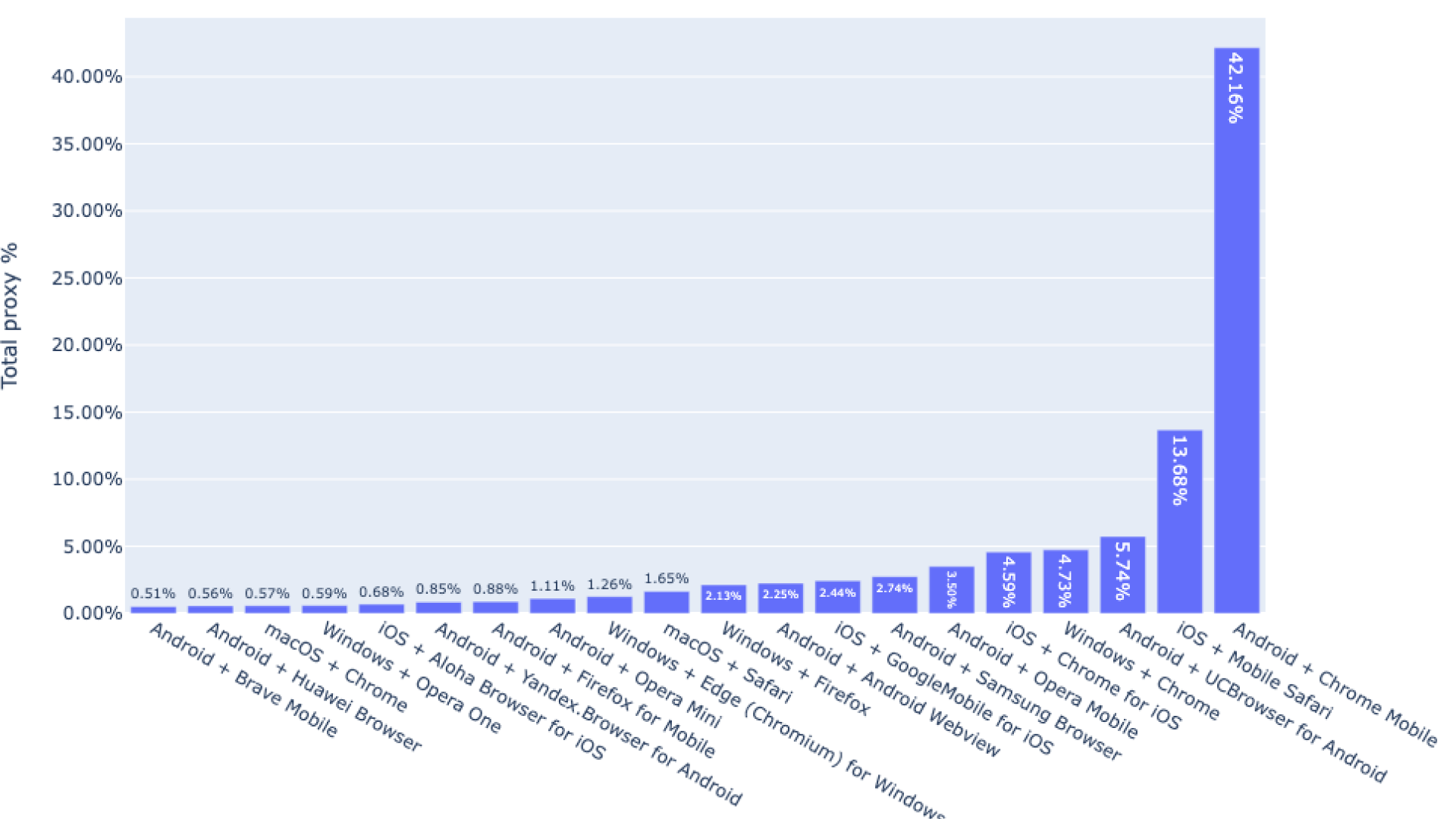
The graph highlights the OS and browsers with the highest volumes of proxy traffic according to our statistics:
- Android + Chrome Mobile: 42%;
- iOS + Mobile Safari: 14%;
- Android + UCBrowser for Android: 6%;
- Windows + Chrome: 5%;
- iOS + Chrome for iOS: 5%;
- Android + Opera Mobile: 4%.
Among these segments, the highest proxy traffic shares are observed on Android with UCBrowser (15%) and Android with Opera Mobile (20%).
Browser Languages on proxy traffic
Lastly, our study examines proxy traffic distribution by browser languages, offering a linguistic perspective on web traffic. Understanding the predominant languages used by proxy traffic can inform content localization strategies and language-specific ad targeting.
Distribution of Total Proxy Traffic by Browser Language
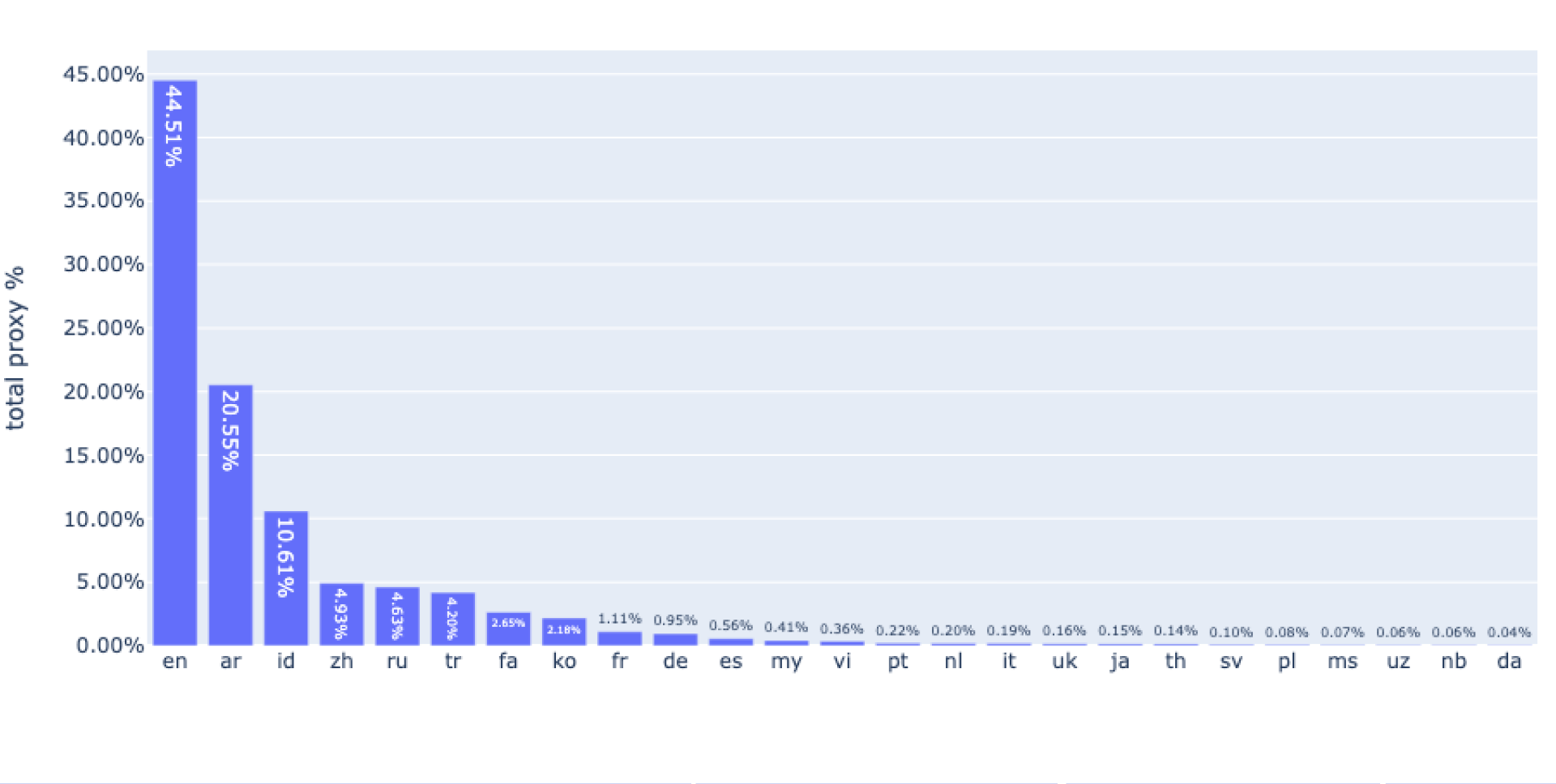
The graph illustrates the most commonly encountered browser languages on proxy traffic:
- English: 45%;
- Arabic: 21%;
- Indonesian: 11%;
- Chinese: 5%;
- Russian: 5%;
- Turkish: 4%;
- Persian: 3%;
- Korean: 2%;
- French: 1%;
- German: 1%;
- Spanish: 0.5%;
- Burmese: 0.4%;
- Vietnamese: 0.3%.
Conclusions
Based on provided data we drive following results:
- Countries with a proxy traffic share of over 20%: Luxembourg, Singapore, Netherlands, France, Andorra, Finland, Hong Kong, United Kingdom, Liechtenstein, Dominica, Iceland, Greenland, Germany, Lao People's Democratic Republic.
- Widely used browsers with a proxy traffic share of over 25%: Facebook, Aloha, Opera Touch, Opera One, DuckDuckGo.
- Commonly represented languages: Arabic, Indonesian, Chinese, Russian, Turkish.
Our comprehensive analysis of proxy traffic distribution by countries, browsers, OS, and browser languages provides a deep understanding of user's behavior and preferences in 2024. By incorporating these insights into your advertising strategies, you can enhance targeting accuracy, optimize user engagement, and drive better campaign results. Stay ahead of the curve with [Your Advertising Network], where data-driven insights pave the way for successful digital marketing endeavors.
Hope you all enjoyed this detailed breakdown and already know how to amplify your ads with these key insights! If so, why not to start making more profits right now?
